(After a month break, resting my leg, and physical therapy, I’m finally back. It has been nice being at home, without feeling the pressure to ‘generate content’, but I’ve also gotten restless. While I’ve enjoyed my daily routine of 5:30 a.m coffee at McDonald’s, reading, physical therapy, going for short walks, reading more, I also am getting bored. I miss the now familiar feeling of the unfamiliar. The sense while traveling that each day I’ll run into something a little new, which will nudge my static mind into being a little less static.
So tomorrow I leave for five days in Phoenix, then three in LA, then three weeks in Manila. Hopefully I’ll also have time for a small side trip to Brunei.
I’ve also missed the back and forth here in the comments, a little community that, unlike most social media communities, isn’t rife with anger. Which I really appreciate. So thank you, and my apologies again for the break. I hope I won’t need another, but my leg will determine that, and so far it seems to be cooperative.
I sketched out a few more weighty philosophical pieces while resting — about things I’ve learned over the last two years — but in the spirit of resting, I shelved those for another time. I did write this more fun piece, which tries to answer the question, what makes a city more walkable! )
Not surprisingly I get tugged into online debates about walkability, a quality almost everyone claims they want in a city.
I’ve stayed out of the conversations, some because little good comes from online debates, but mostly because I’ve never understood what people actually mean by walkability. When pressed, the usual definition — you don’t need to own a car— is true of almost some part of every city, if you have enough money.
In every world city, midsized and above, there are always one or two neighborhoods where you can get everything you need, either by walking, or paying for delivery. This is almost always the same part of the city where tourists go, so not surprisingly, everyone thinks every city is more walkable than their own.
Yet, that to me isn’t what walkability is, which shouldn’t be a function of a resident’s wealth or location, rather it should reflect the modal experience, or what most residents experience on a daily basis.
Now that I’ve walked over fifty global cities, I think I’ve got a better handle of what walkability really means, or should mean, and given that I used to be a Physics guy, I’ve tried to quantify it, bureaucratic style. So I can spit out one walkability score that definitively and unfairly summarizes a city.
As I hope you picked up, I’m taking this as a fun exercise, which is both very subjective, and very off-hand.
So I’m happy to hear your thoughts, and am open to being told I’m completely wrong!
What is walkabilty?
There is a lot of definitional slipperiness when trying to define walkability1, but my top-level measure is, “Can a randomly chosen citizen live happily in the city without owning a car, and without a high usage of cabs, ride shares, delivery services, and other private transportation?”
By random, I mean both in wealth, and location. So it’s not simply about one part of the city, or about one class in the city.
Now the last qualifier is a bit unfair since cabs, Ubers, and Amazon delivery services do make life in a city without a car easier, and possible2 — but that in my mind is a different metric than walkability, which as the name implies, should reflect the ability to do most of what you need by walking, not by sitting in your apartment or being shuttled from place to place.
So, here are my seven measures of what makes a city walkable, in no particular order (we will address that next).
Density
In general, the greater the density, the more likely you are to walk, since the distances between you and what you need is never too great. There are the rare exceptions where too much density means walking is uncomfortable, because of crowds (Dakar, parts of Tokyo, Seoul, and Hanoi), but in general, the greater the density, the more the city is built around walking, and less around cars.
Localized distribution
That is, are the resources to living (retail stores, parks, markets, bars, restaurants, museums, etc) evenly distributed geographically, or are they all clustered in certain areas?3
Is every neighborhood (since every city is a federation of neighborhoods) essentially its own micro-city so that a resident can live locally?
The classic example of country that prioritizes local distribution is England, where every neighborhood has it’s own attached high street, which clusters the needed stores and shops onto one long avenue.
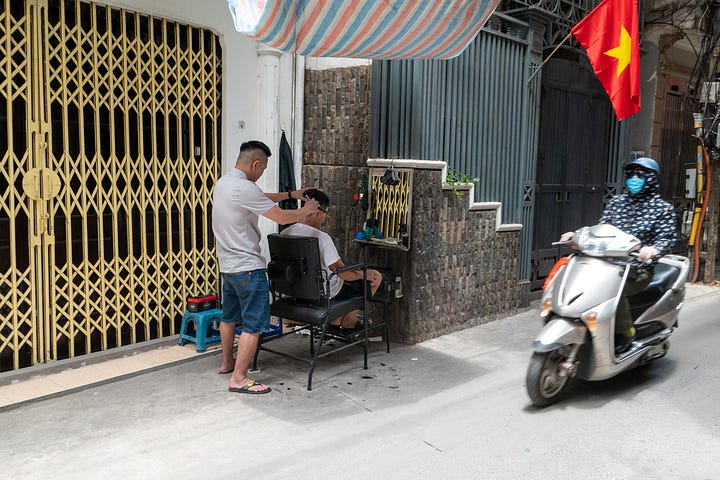

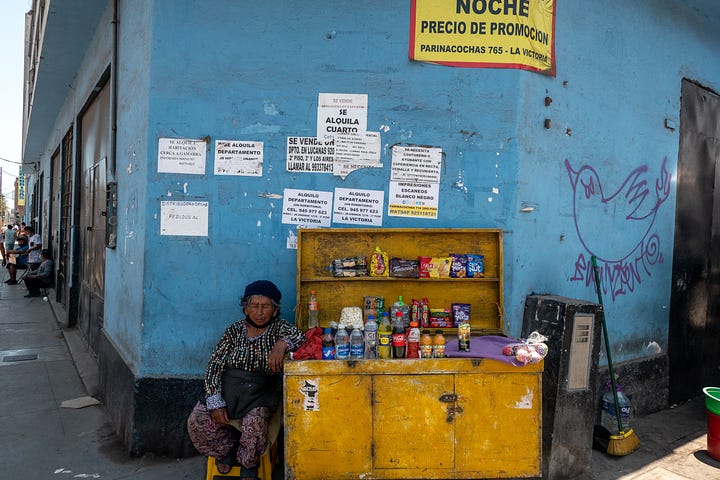

Localized distribution can also be less organized than in England, or at least less top down, and more ad-hoc. Like in Hanoi and Lima, and other less developed countries, where sidewalk stalls, corner booths, and ground-level shops in people’s homes fill in the gaps.
The US generally fails at local distribution, with it’s combination of high regulation (zoning that limits bottom-up solutions), franchises needing big footprints, and low density living. I’m thinking of you in particular Orlando!
Proper Infrastructure
To walk you need functional sidewalks, bridges with pedestrian paths, nice crosswalks, proper lighting, and so on, so you are not killed or mauled by a car, moped, or bike.
Sidewalk integrity sounds like the title of the most boring panel at an urban studies workshop, but it’s probably the biggest single factor in a city’s walking infrastructure.
Nobody likes to walk when it’s easy to break an ankle, twist a knee, or stub your toe.
The US, relative to the rest of the world, scores pretty high on sidewalk integrity, where it has sidewalks. Asia and Latin America are generally bad.
The worst city for sidewalk integrity I’ve walked was Bogota. That was before I was doing this Substack, so I don’t have pictures, but I remember counting ten different surface materials, each with a different grip and elevation, on one block. And this was in a “nice” neighborhood!

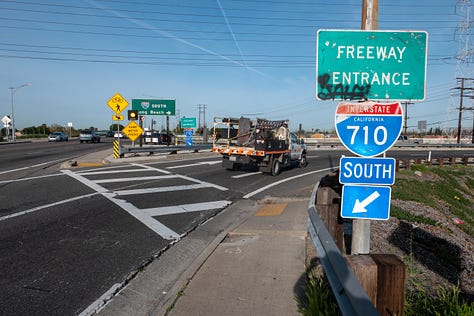
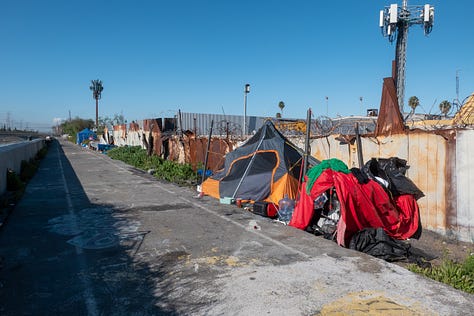
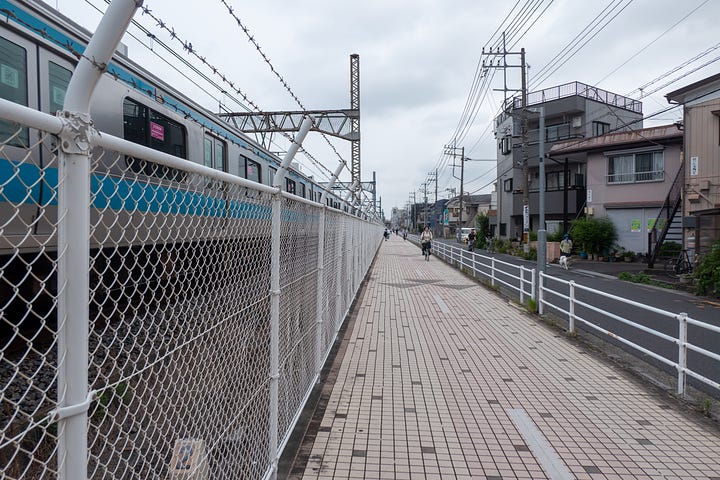

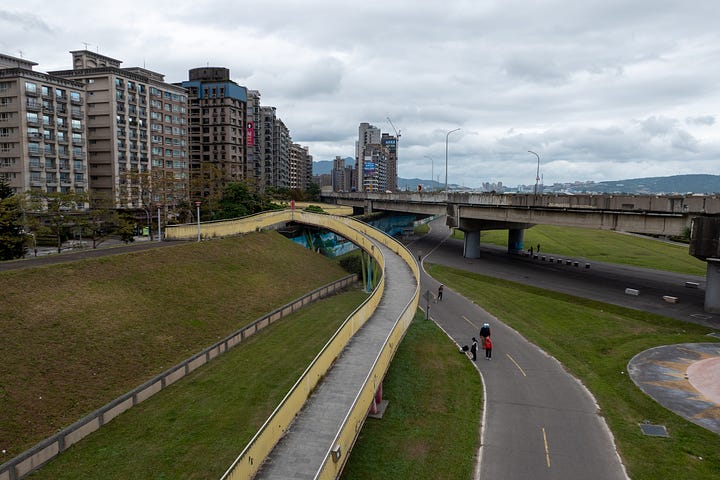

There is also a big difference between providing a path for a pedestrians, and providing one that is actually enjoyable and safe to use.
The amount of perfunctory crosswalks, and pedestrian bridges, in the US is especially high. They are crossings in name only; if you actually try to use them, you end up feeling like a cat on a freeway.
An extensive public transportation system
With the exception of a few odd people, nobody is going to walk all the time for everything. You are going to take a few subway and bus boosts now and then, especially when it gets dark, especially as you age.
So the ability to get from any point A to B using public transportation, without spending unnecessary amounts of time, is a must for a walkable city4.
While for this piece, I’m ruling out cabs and Ubers, I could write a whole essay alone on why I think that’s unfair.
Before you yell at me, I love buses and subways, and would much rather take them than get a ride from a friend, or grab a cab, but I also know I’m fairly unique, relative to the rest of the world.
Very few people, not just in the US, prefer taking a bus over driving, or being driven. Most of the world equates wealth, or at least the good life, with owning their own car, even in places where they have the best, most inexpensive, public transportation systems (looking at you Bucharest and Japan).
Or to put it another way, walkability (as this essay, and most elites, means it) is not the highest measure of a city’s livability, although we often, especially in elite spaces, take it as that.
Connectedness
Amman is a great city, with parts that are very walkable, but it’s also a city of steep hills separated by thin valleys, with the old run-off streams that forged them, replaced by wide boulevards of cars with crazy drivers.
The result is it’s now really eight or ten disjointed cities, with cabs as the only way to easily get between them (they do have buses, but they rarely run).
Amman is not blessed with great walking geography, unlike flatter more connected cities that become a cohesive whole, like Tokyo, London, and Hanoi.
Other cities are broken into disjointed segments by rivers and inlets (NYC, Taipei, Seoul), or interstates and bad planning, (LA, Orlando), or a combination of both of them (Sofia).
Disconnectedness driven by geography can be overcome by human solutions, but it can only take you so far.

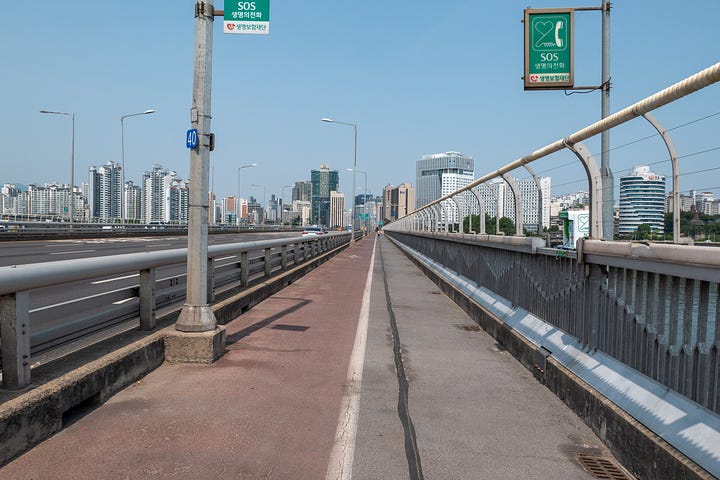
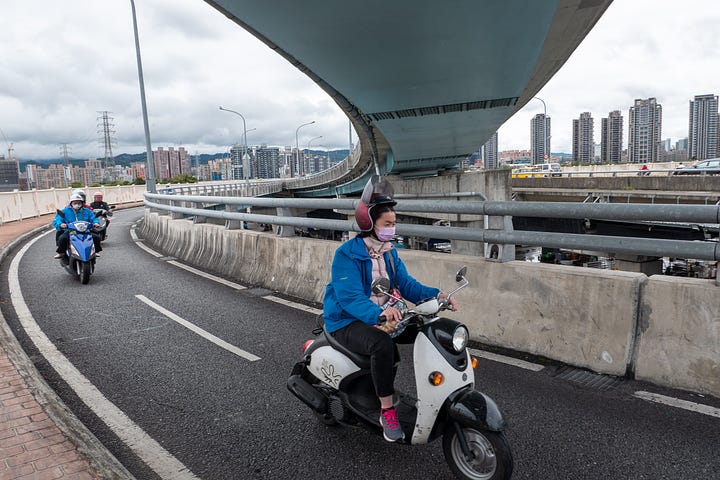

I’ve walked the long bridges of both Seoul and Taipei, and while they are well planned, with demarcated pedestrian lanes, they don’t make for enjoyable strolls. More like tasks to be overcome.
Good climate/ low crime/low pollution
This one is pretty straightforward. You should be comfortable when walking. That means not have the risk of being mugged on the street or on a bus, not getting frost bite or heat stroke, and not inhaling ten liters of fumes per block.
When you go to places like Bishkek, or Ulaanbaatar in the winter, when the smog from the tens of thousands of home fires settles over the valley, it’s a nice reminder of just how far the US has come in last four decades on air pollution.
Los Angeles and NYC still have smog, but it’s nothing like it was in the 80s, and nothing close to what you find in many global cities, where walking can become literally unhealthy.
It might not be equivalent to smoking a pack of cigarettes, but only because it’s a lot less fun.
Cool things to want to walk to
I mean. You should want to leave your pod.
All of these categories are subjective, and the scores I assign below to each of them for each city are entirely made up by me based on my experience, but this is the most subjective.
It is kind of a cheat category, which you can use to boost one city, or ding another. But then again, this whole exercise is like that!
Putting it all together into a final score
Hopefully after all the above, if you are still reading, you’re as skeptical of this whole thing as the two men above were skeptical of me claiming I was going to walk across England. Good.
Regardless, here is my super-duper walkability metric, of some of the cities I’ve walked, using all of the above variables, equally weighted.
Here is the same metric, but using my own personal weighting. That is, making pedestrian infrastructure the most important factor, contentedness the least.
I’ve uploaded the file as an excel worksheet to google docs, if you want to play around with it, although it’s a straight-forward averaging of subjective scores (from 1 to 10) normalized to a scale from 0 to 100.
Here is the link for the geeks in the crowd: Walkability sheet. Feel free to play around with it, but please only write in the cells with blue-numbers.
I’m ok with the results since they also pass my sniff test, with places I’ve enjoyed walking (Tokyo, Istanbul) ranking high, and those where it’s been more of an exercise in frustration (Orlando, Ulaanbaatar) ranking low.
Last semi-obvious note that I want end with, that I touched on above and in the footnotes: This version of walkability, or almost any version, isn’t or shouldn’t be the highest goal of a city!
I really like walking in a city, as most tourist also do, but as I’ve found talking to residents all over the globe, it’s not necessarily most people’s priority. They don’t equate walkability so tightly with livability, like we do.
A lot of the world likes, and even dreams, of the low density car-centric US suburbia that gets so much online scorn, and a lot of urban planners scoff at. Not surprisingly those cities come out low by my metric (Jacksonville, Orlando, LA, El Paso).
What they aspire to is a ranch house on a plot of land that could never be a ranch, with a garage packed with three to four cars that cost in total as much if not more than the house itself.
If you ask a lot of the rest of the world what they see as “the American Dream”, you will hear a version of that. It’s one of the reason so many people want to immigrate to the US. So they don’t have to walk.
Which is why I find the whole walkability debate a little funny. It’s another version of the “everyone wants what they don’t have” thing. In the US, we (well, at least elites) imagine our life would be better if our cities were more like the global cities we vacation in, while many people living in those cities dream of moving to the US, getting a car, and never having to take a bus or walk again.
PS: The cover photo is from Hanoi, and yes, it’s of a blind man walking across a street of mopeds, cars, trucks, carts, and other obstacles, that I was worried about crossing.
Here are pictures, of different intersections, to give you a sense of what he was crossing.

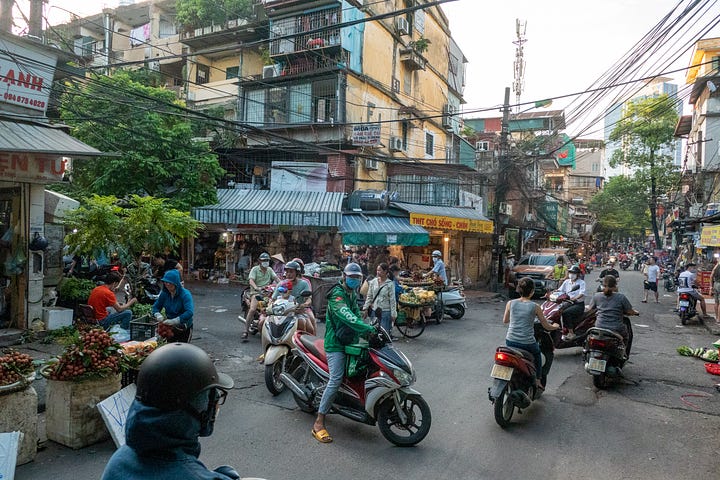
He crossed it every day, and he didn’t want help, although I offered it (a shopkeeper who spoke English assured me he could handle himself.)
For instance, what are the actual borders of a city? Does NYC include Jersey? Long Island? I think it should, so for all these conversations I’m taking a city to represent its larger metro region, including suburbs.
There is a much longer more thoughtful piece I should write about the relative merits of this type of city, which is how much of the US has gone, giving up classic walking and buses and metros, or public communal solutions, for private and contracted bespoke solutions.
The short summary is, a lot of people really like this type of lifestyle! I don’t, but I also recognize that is my own, somewhat elitist, view.
While this often comes hand and hand with density, it’s not the same, and it makes the biggest difference between dense high walkable cities, and dense less walkable cities.
It is actually faster to walk from one end of Ulaanbaatar than it is to take the bus. They have awful traffic jams, and don’t have dedicated bus lanes.






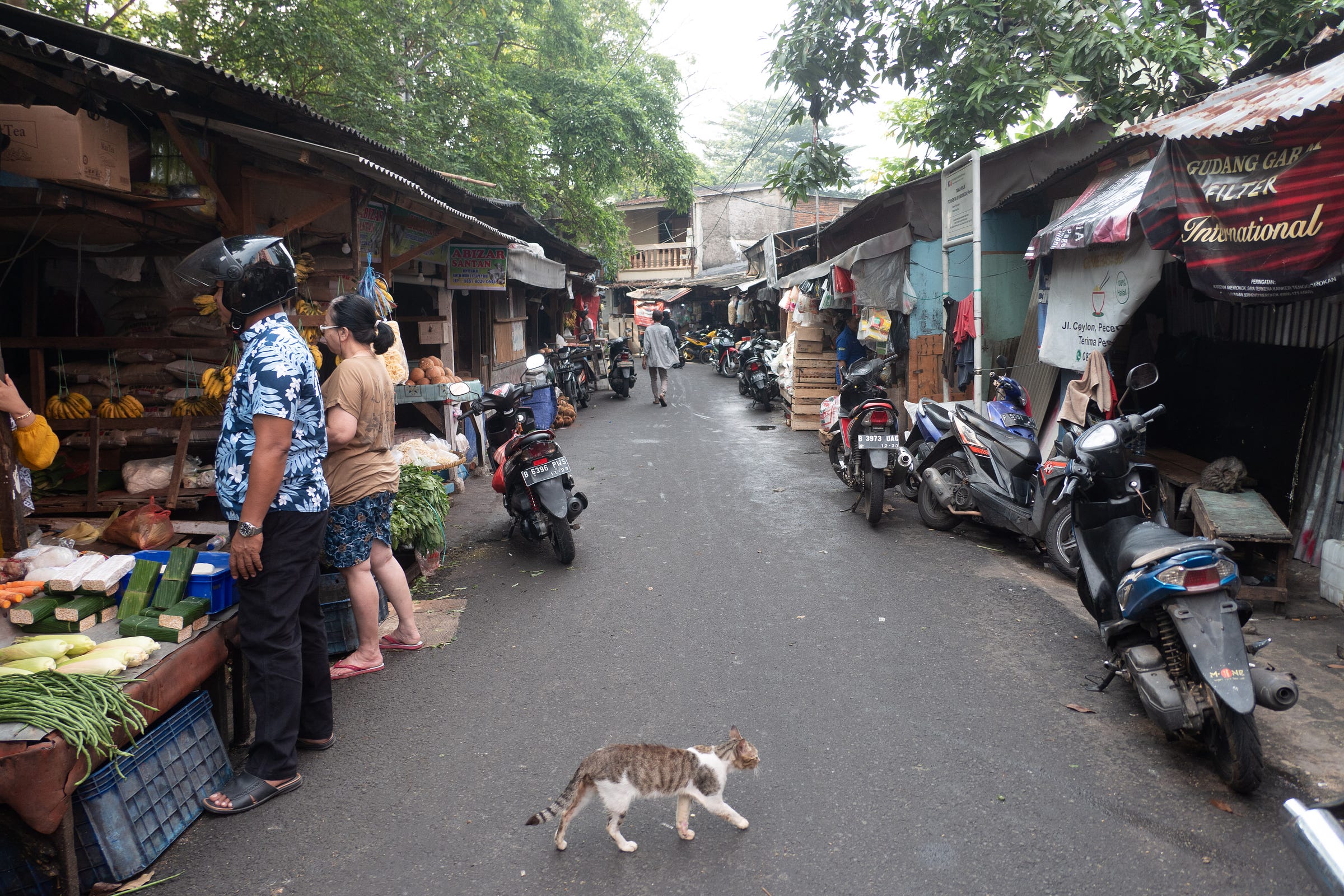








I used to live in Frankfurt, Germany, and more or less in the city centre - just the other side of the river from the main train station. It was a great city for walking, especially in the summer, but the fantastic public transport of trams, metro and buses meant that it was easy to mix and up and take a break from working whenever needed! Now I'm in London which is also a great walking city, and pleased to see that London got a good score.
With respect to climate, it’s not just the intrinsic conditions that matter. It’s also a question of what aspects of the city amplify or mitigate the worst extremes of local weather. As the planet warms, it is critical to add shade and reduce the amount of heat absorbing pavement in many cities.